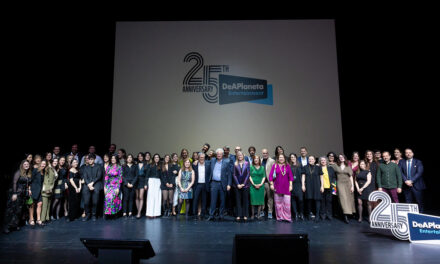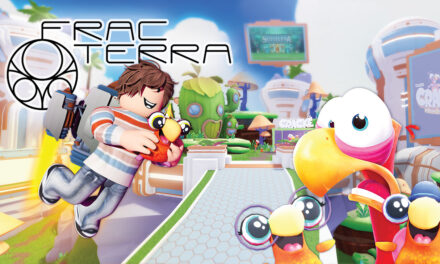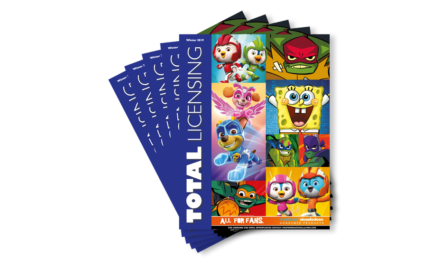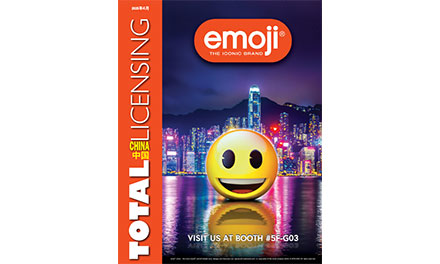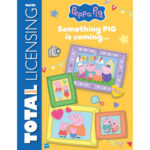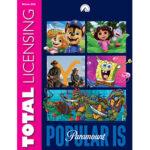
The use of Emoji in domain names – an article to celebrate World Emoji Day on July 17th 2022

By: Gareth Jehu, CTO, Com Laude
A look back at the origins of emojis
We all love emojis, right? Today, they are ubiquitously used in our online digital exchanges in email, social media and messaging channels like WhatsApp and texting. Their popularity can largely be attributed to the old adage that “A Picture is worth a thousand words” and can very often convey emotion or intent much more succinctly than text, especially in circumstances where for example the author is trying to lighten the mood through humour, looking for ways to express themselves in a more comfortable way or just in situations where words simply fail us.
The history of emojis date back to the late 1990s, and it was very much the advent of the mobile internet and smartphone era in Japan that was the catalyst for the birth and growth of emoji as we now know them. In 1999, Shigetaka Kurita an artist and employee of NTT Docomo, Inc, a Japanese mobile phone operator created 176 12 x 12 pixel images taking inspiration from various sources such as Japanese Manga and Anime, Chinese characters and street sign pictograms. In the early 2000s, the adoption of emojis continued to rise in Japan largely through Docomo, Inc’s success in onboarding over 40 million subscribers to its i-mode internet service, and this created competition in the space with other mobile phone operators developing their own emoji sets.
This created a problem in that there were no standards for emoji development and use, which meant interoperability across different devices, networks, and applications was a challenge. This all changed in the late 2000s when tech companies like Google and Apple, along with mobile telephony providers around the world began to collaborate on standards. This collaboration culminated in 2010 when the Unicode Consortium, the organisation that maintains and publishes the Unicode Standard agreed to incorporate character encoding for 722 emoji.
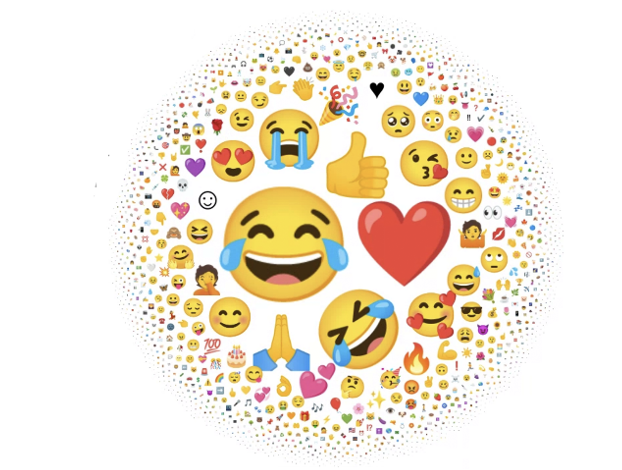
Today, there are over 3,600 emoji in the Unicode Standard and inside a computer or phone, each is a sequence of one or more Unicode characters, but to the billions of emoji users, they can express a full range of emotions and feeling including love, ideas, culture, and much more. Some of our most popular uses are shown in the emoji circle to the right. In 2015, Oxford Dictionaries named U+1F602 or more commonly known to us all as the Tears of Joy 😂 emoji as it’s “Word of Year”. It’s president Caspar Grathwohl neatly summarises the cultural shift in modern communication methods citing the struggle faced by traditional alphabet scripts in light of the rapid-fire, visually focused demands of 21st Century communication, noting that it’s not surprising that a pictographic script like emoji has stepped in to fill those gaps—it’s flexible, immediate, and infuses tone beautifully.
Emoji and Domain Names
So, we have looked at the history of emoji development, its mass adoption and its importance to the way we all now digitally communicate. We have established that the emoji is now incorporated into the Unicode standard meaning interoperability is now much easier across multi-vendor devices, networks, Operating systems and applications. What about the use of emojis as domain names?
We’re all familiar with the ASCII based Latin script domain names like google.com which in conjunction with the Domain Name System (DNS) provide us with an easy and effective means with which to access websites, our email and other digital Apps. You may also be familiar with Internationalized Domain Name or IDNS for short. These names contain one or more native language characters such as Bücher.example and the range of language scripts now supported is extensive including German, Spanish, Russian, Chinese, Arabic and many others. The resolution and operation of IDN domain names over the Internet are possible as a result of the standardisation of the encoding protocols, which can convert the ever-growing number of Unicode characters, which currently stands at just under 150,000 into strings that the DNS can handle. In the use case above, Bücher.example when converted to Punycode is bcher-kva. It is then prefixed with xn—to produce xn--bcher-kva, which can quite happily reside and resolve as a host domain name functioning in the same way as google.com
There is a reason for this 101 walk-through of how both Latin script and IDN based domain names operate – both utilise Unicode character sets either in an encoded or non-encoded format. The same applies to emoji that have been incorporated into Unicode meaning that emoji can be and are being used as domain names.
Their use as domain names, however, does present some challenges and in line with its remit to provide a secure, stable and interoperable internet, ICANN has conducted a study into the use, risks and consequences of emoji in second-level domains.
Since the early 2000s, there has been community interest in the use of emoji in domain names and the first registered names containing emoji appeared on 19th April 2001 which included ☮️.com, ♨️.com, ♨️.net
The first reported commercial use of an emoji domain name was in 2015 with Coke launching a major advertising campaign which used 😀.ws on a standard Coke background. A number of companies have used domain names which contain an emoji at the second level such as Budweiser (❤🍺.ws) and Sony Pictures (😊 🎬.ws)
ICANN’s 2019 study however, identified a number of security risks associated with the use of emoji as domain names stating that the ambiguity and confusion they cause can lead to a denial of service or misconnections, and expose users to phishing and other social engineering attacks. They go further to highlight potential problems adversely impacting the end user experience associated with Emoji domains which include:
- Emoji being too visually similar to distinguish
- Some Emoji can be combined or “glued” together and many systems will not support this form of concatenation
- Emoji are not displayed uniformly across all platforms so for example the Dizzy Face Emoji 😵renders differently across Apple, Google and Microsoft platforms
- Some emojis allow users to apply one of five skin tone modifiers. These can make emojis difficult to distinguish and are subject to interpretation
So, ICANN’s position is clear – it strongly discourages the registration of any domain name that includes emoji in any of its labels and advises registrants of domain names with emoji that such domains may not function consistently or may not be universally accessible as expected.
Three years on from ICANN’s study there are still a small number of ccTLD registries that accept emoji registrations. ccTLDs, of course, are not bound by ICANN policies, but a number do participate in the ICANN community through its ccNSO, and this group, together with the wider multi-stakeholder community, continue to research and debate ways in which the security and operational concerns identified can be mitigated to allow a more consistent adoption of emoji across top-level domains.
The emergence of Web 3.0 and Blockchain domain names
As the discussions of emoji use in the regulated domain name space continue, we need to be fully in tune with the emergence of Web 3.0 – the next iteration of internet technology. Unlike Web 2.0 where data is stored on centralized servers, Web 3.0 is based on blockchain technology where data is saved on millions of different computers worldwide otherwise known as a distributed ledger.
Each blockchain can have its own unique domains. The Ethereum Naming Service (ENS) allows the registration of .ETH names on the Ethereum blockchain, whilst .HNS names can be registered on the Handshake blockchain. A blockchain domain uniquely identifies an address on the blockchain in a “human readable way” just as a DNS Domain identifies an IP address and many providers are already supporting emoji. Web 3.0 and blockchain domains and services are not subject yet to the same levels of regulation and standards we have in Web 2.0 and so it is likely that interoperability, security and stability challenges will also be faced with the use of emoji blockchain domains. This is very much a technology platform and movement that is in its infancy, but the early adoption signs are indicating the need to stay close to its development as we will almost certainly witness shifts in standards, user behaviour and regulation as Web 3.0 gathers momentum.
The future of emoji in domain names
It is not entirely clear for either Web 2.0 or Web 3.0 the direction of travel or the role and significance emojis will have in future domain name trends and standards but it’s certainly an area to keep a close eye on. In the meantime, one thing is for sure – the use of emojis in our everyday digital lives is here and here to stay.
Happy World Emoji Day from everyone at Com Laude. 👍 👍 👍
